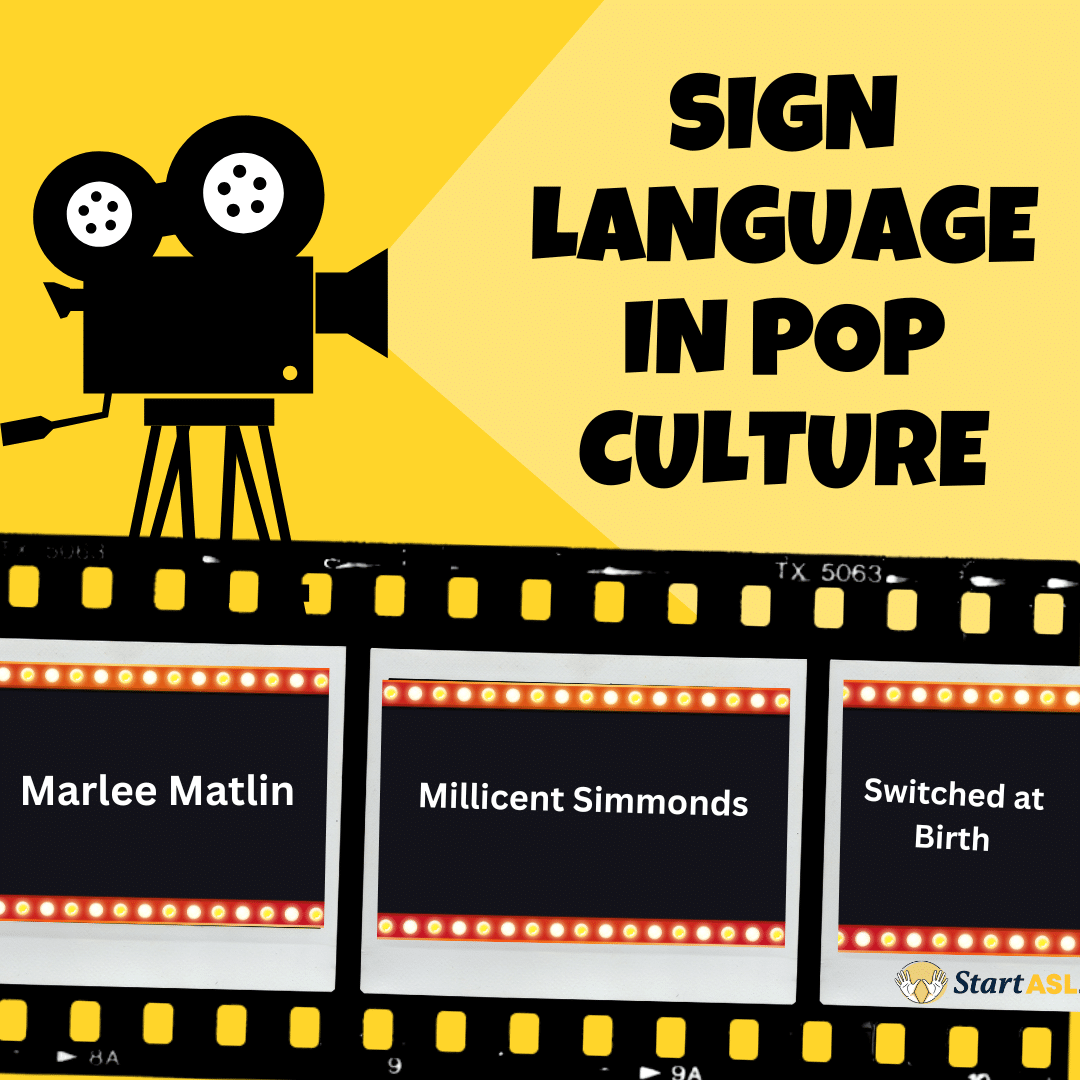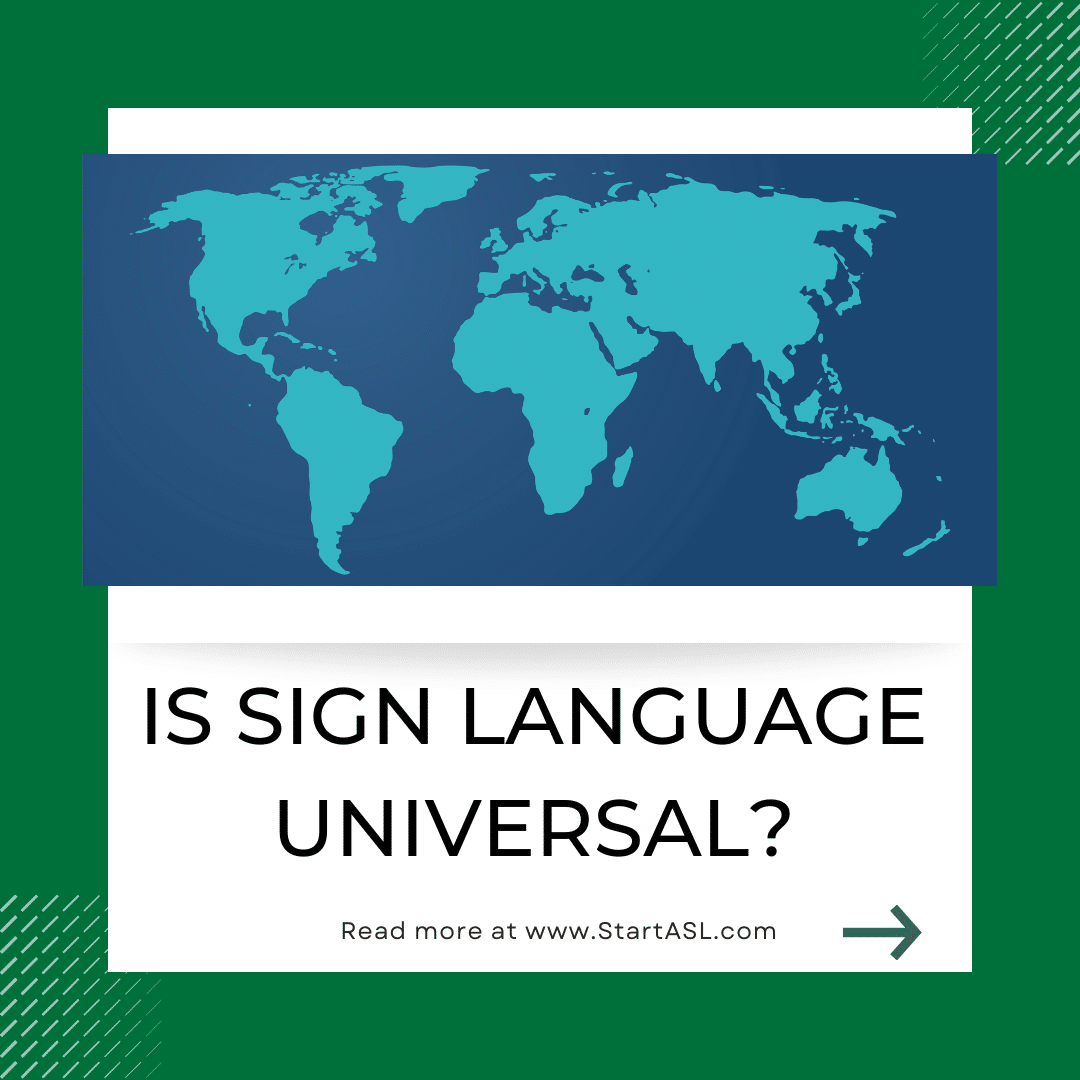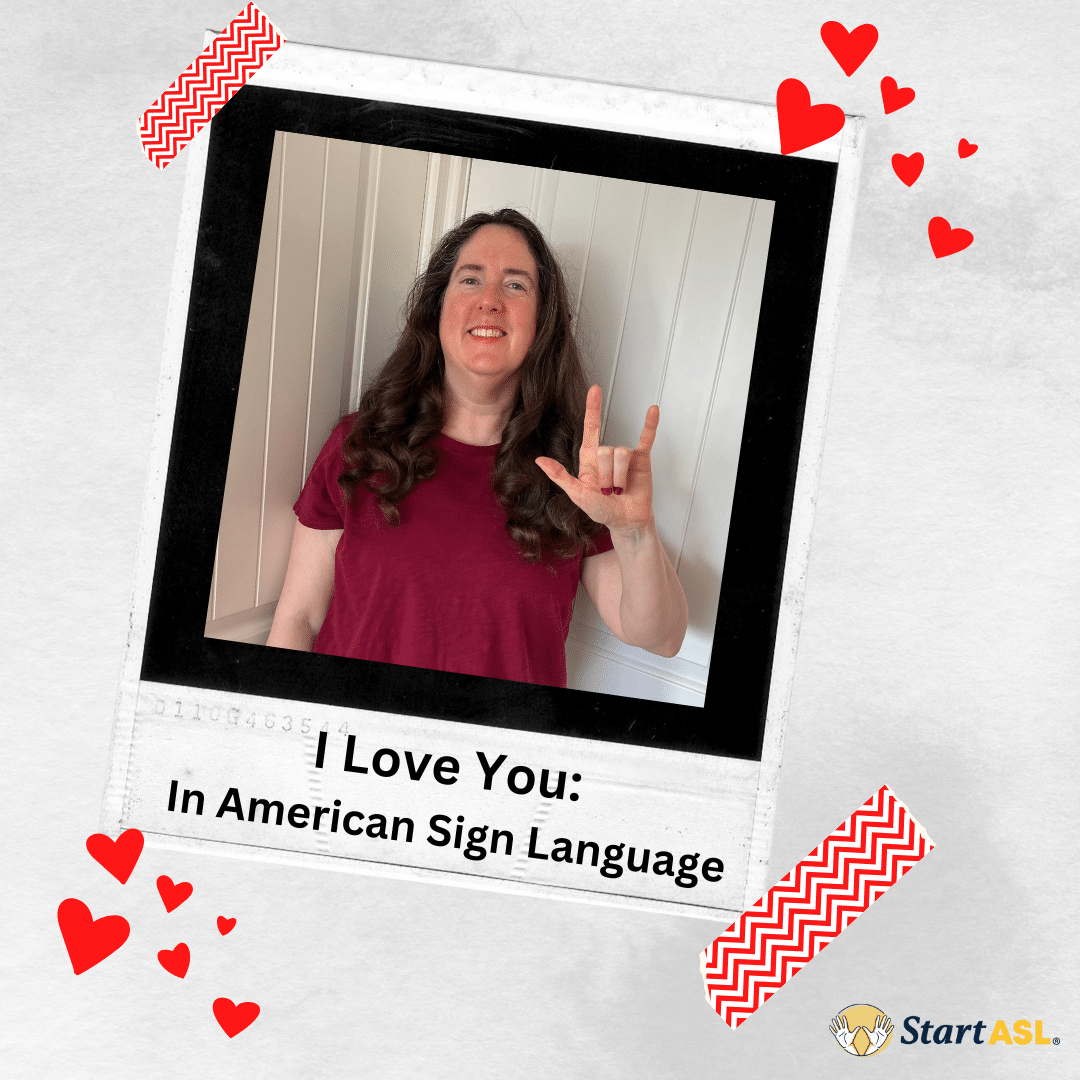
How to Immerse Yourself in the Deaf Community?
- by Katelyn Cheng
- One Comment

It is exciting to learn American Sign Language and now you are ready to use it in the real-world, but you do not know where to go or how to meet people. Do not worry, this article will help guide you towards the right direction of stepping foot in the Deaf community. Firstly, you can check out Start ASL event page. Secondly, you can ask your ASL teacher for recommendations what Deaf events there are and where to go. Thirdly, join Deaf groups on Facebook. Deaf people are always using Facebook as a way to spread the word about a Deaf event. You will so many Deaf events to go to. Fourthly, if you have Deaf friends to join them when they go to socials. It is important to find ways to get yourself out there and involved at Deaf socials whenever possible. Socials are the best and only way to practice your sign language, both giving and receiving. When you participate at socials, you are exposed to the real-life conversations and the Deaf culture.
Deaf people tend to be extroverts and you cannot be shy. Don’t be afraid to join in a conversation or start a conversation with a Deaf person sitting next or across from you. Even though you do not know a ton of signs, knowing ASL alphabet goes a long way when interacting with Deaf people. It is a start to building your vocabulary. Plus Deaf people are very patient. Below are words and phrases that would be helpful to know before attending a Deaf social.
Basic Family Signs in American Sign Language
Family
Mom
Dad
Brother
Sister
Grandma
Grandpa
Aunt
Uncle
Cousin
Oldest
Youngest
If you are wanting to expedite your knowledge on the ASL terms, you can check out Start ASL dictionary.
You may have already know some of pointers about Deaf culture and ASL, but they are listed below as a reminder:
Here are some facts that make American Sign Language (ASL) unique as its own language:
- ASL is not universal as it is commonly used within the United States and Canada. Whoever lives outside of the US learns ASL, it is counted as an additional foreign language. ASL has its own sentence structure, grammar, signs, slangs, and phrases that may or may not exist in other foreign sign languages. Since none of the sign languages are universal, International Sign is not a language per se, but it is used to communicate with foreigners. International Sign mainly consists of facial expressions and body gestures to successfully convey the message. For example, “question/ask” is signed with drawing a question mark in the air, or “time” is signed by pointing at the wrist to represent someone wearing a watch.
- ASL was derived from French Sign Language (LSF), so there are a lot of similarities between these two sign languages. In 1755, a French guy named Abbe Charles-Michel de I’Epee founded the first deaf institute in Paris. Thomas Hopkins Galladuet traveled to Europe in 1815 to study methods for teaching Deaf students and during his attendance at an event, Gallaudet was invited to visit the Deaf school in Paris by two French people. Gallaudet asked Laurent Clerc, a deaf teacher of the Deaf institute in Paris, for a favor to help him establish a Deaf school in America. In 1817, Gallaudet and Clerc established Deaf schools in Connecticut. In 1864, today’s Deaf university, known as Gallaudet University, was founded. Today’s ASL was strongly influenced by Deaf students who graduated from American School for the Deaf, who passed down the sign language and Deaf cultural experiences. Furthermore, ASL became one of the most used languages in the United States. Read more about ASL history.
- There are different modalities of sign language such as American Sign Language (ASL), Pidgin Sign Language (PSE), Signed Exact English (SEE), Cue Speech, and Total Communication.
- There are signs that have multiple meanings, so D/deaf people either use context clues to understand the story being expressed, or the signer finger spells out the words to better clarify a sign.
- D/deaf people can sign in quiet places, during eating, from far away, or even through the windows.
Here are some facts about Deaf culture and Deaf community:
- There are Deaf bings that are only unique to the Deaf community. Deaf Bings are Deaf people’s common habits in the Deaf Community. Typically these habits do not exist in the hearing world.
- Also, there are Deaf slangs that are only unique to the Deaf community.
- Signing with one hand is common especially when the other hand is occupied, for example, during FaceTime or drinking or eating.
- Identity. In Deaf culture, “D”, “d”, and “d/Deaf” are extremely significant. “Deaf” with a capital ‘D’, “deaf” with a small ‘d’, and “d/Deaf” with both capital and small ‘d’ all have their unique meanings and how they are applied to people who are deaf. People who are deaf are raised differently and their identity is usually defined by how they were raised, their perspective of the term deaf, and their preferences.
- “Deaf” with a capital ‘D’ – People who are “Deaf” with capital ‘D’ identify themselves as culturally Deaf and are heavily part of the Deaf community. They do not view deaf as a disability and dislike to be labeled as hard-of-hearing. Typically, Deaf people are from a family who are generationally Deaf and usually will attend Deaf school. Whether or not they wear hearing aids, they typically do not speak or hear. They view Deaf as part of who they are and their identity, and they take great pride in it. Although ASL tends to be, but not always, their first language, it is their primary language and source of communication.
- “deaf” with a small ‘d’ – People who are “deaf” with small ‘d’ are usually hard-of-hearing with either hearing aids or cochlear implants. Deaf is seen as a disability and “loss of hearing”. While Deaf people do not like to be labeled as hard-of-hearing, deaf people usually identify themselves as hard-of-hearing because they interact in the hearing world and they have the ability to communicate orally. They are comfortable functioning in the hearing world and feel at ease with the interactions of hearing and talking. Since deaf people grew up oral, they are usually skilled at lip-reading as well. In addition, they are educated in mainstream education where they learn alongside other hearing students, and typical interaction with other students and teachers is through hearing and talking. They may or may not choose to immerse themselves in the Deaf community, but if they do, this usually happens later in life.
- “d/Deaf” with both capital and small ‘d’ – While “D” and “d” is fairly easy to differentiate, it can become a bit confusing when you are not sure how someone identifies him/herself. In this case, “d/Deaf” with big and small ‘d’ comes in handy and usually identifies someone both ways. Unless it is clearly stated how a person identifies him/herself as Deaf with capital ‘D’ or deaf with small ‘d’, the use of “d/Deaf” to identify a deaf/hard-of-hearing person is a safe way to not offend.
- Name sign is a sign that is exclusively given to the person and it is usually created based on the person’s characteristics, personality, hobbies, etc, which uniquely and distinctively identify a person. When it comes to a person’s identity, name sign plays a major role in defining who the person is. When you introduce yourself to others, you should finger spell your name, followed by your name sign, so the person can immediately identify and remember who you are.
- D/deaf people are eligible for disability discounts such as free entrance into National Parks, discounted tickets, etc. National parks are popular touristy locations, but the entrance fee can be somewhat pricey, with daily entrance fees sometimes ranging between $30-35. Deaf people can get special passes that allows them to get in a vehicle and all its passengers in for free. National passes do not apply to State parks, but each state has their own disability passes that D/deaf people can apply for to receive. Not only do D/deaf people get free admission to National parks, but they can also get free admission into museums such as art museums, aquariums, and zoos, and some places have reduced tickets to attend interpreted or closed captioned plays.
- D/deaf people are able to sleep soundly at night because they do not hear noises such as airplanes, trains, cars, ambulances, or thunderstorms. They also have the advantage of a quiet environment when needing to concentrate on studying or work. Even D/deaf people do not have to deal with family chatters around the house and be able to enjoy relaxing.
- Be direct. There is no such thing as “beating around the bush”. If you have something to say, then say it. Taboo questions are totally appropriate to ask. Basically, there is no filter when it comes to expressing or asking questions.
- Make constant eye contact. It is actually considered rude to not make eye contact. Have you ever heard of the saying, “My eye is my ear, my hand is my mouth”? Deaf people communicate through using sign language and rely a lot on body language and facial expressions.
- Turn your voice off. Deaf people cannot hear or speak. It would be considered mindful to not start talking without giving the effort to communicate using sign language. In the Deaf community, it is all about signing, using gestures, body language, facial expressions to communicate with each other. It is okay if you are a beginner and is just starting to learn ASL. Deaf people understand and are patient. They are willing to slow down so you can understand. Communicate with Deaf people how they communicate with each other.
- Be mindful that there are different ranges of deafness. Every D/deaf person is different and has different stories of how they grew up. Some knew sign from an early age whereas others learned sign later in life. Do not assume every D/deaf person is the same and all have the same stories. Be mindful of each person’s stories. Certainly do not assume all deaf people know American Sign Language because some may not know how to sign at all.
- Don’t assume D/deaf people need help unless they ask for it. There is a quote, “Deaf people can do anything hearing people can, except hear.” D/deaf people want to be independent just like everybody else. Yes, D/deaf people cannot hear but it does not mean they are incapable.
- Don’t assume all Deaf people can lipread. Some can lipread whereas some cannot lipread at all. This is based on how the person is raised and whether or not he or she grew up orally.
- Deaf people will use gestures or point to the drink or food they want to order. Also, using the phone or writing on paper is an option. Be mindful and considerate. It is interesting to see signing, but do not come off as staring. This becomes rude.
- Also, please do not say “never mind”, “I’ll tell you later,” or “it’s nothing important.” These words make D/deaf people feel left out and excluded. D/HH people should be included and know what is going on just like everyone else.
- Do take the time to repeat what someone said or what is going on. D/deaf people appreciate if they feel included and a part of the conversation. However, don’t over accommodate, meaning yes, D/deaf people wants to feel included, but don’t overdo it. D/deaf people do not have special needs or need special attention.
- In a work place, it is important to keep in mind what a D/deaf person needs to be successful, this means providing appropriate accommodations for the D/deaf person. The accommodations include closed captioning on videos or in virtual meetings. Without closed captioning, the D/deaf person will easily get lost and miss everything being said during the meetings. Also, D/deaf people best learn and do well if they are trained properly step by step and can visually see how the process works. A training document helps some, but the document will miss out small details that need to be explained in person. Phone calls are usually very challenging, so the best way to approach this is either by going to the D/deaf person’s office to explain in person, use Slack, or get on Zoom/Google Meet where there is captions available. D/deaf people communicate/comprehend best when they are are able to see the facial expressions and body language, so D/deaf people appreciate when the cameras are turned on. In terms of feedback, D/deaf people not only hear them in person but also written feedback helps a lot too. Deaf people cannot speak or hear at all and will need an ASL interpreter, so do please provide an interpreter upon request.
- Do not speak too fast. It is important to slow down and enunciate clearly. Face the person you are speaking with. If the person has trouble understanding, repeat and paraphrase the explanation if necessary. Be patient.











One Response
Thank you!